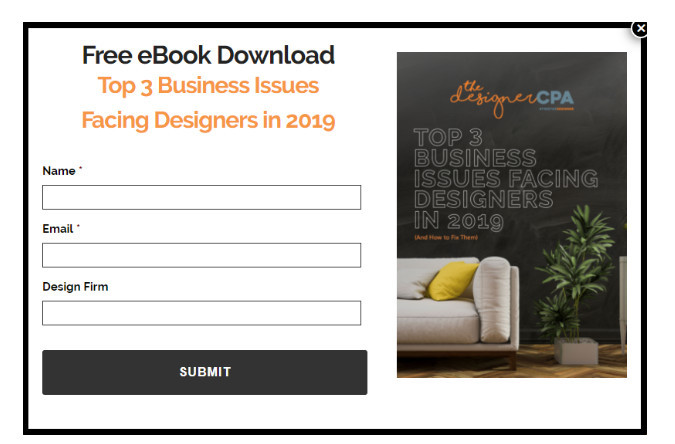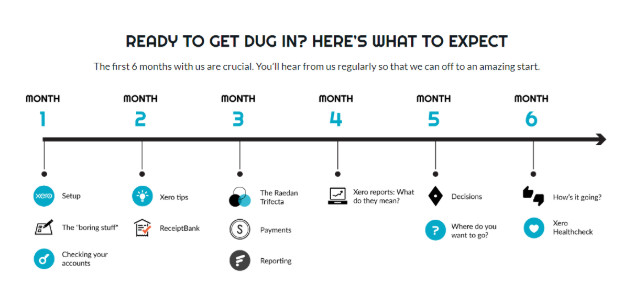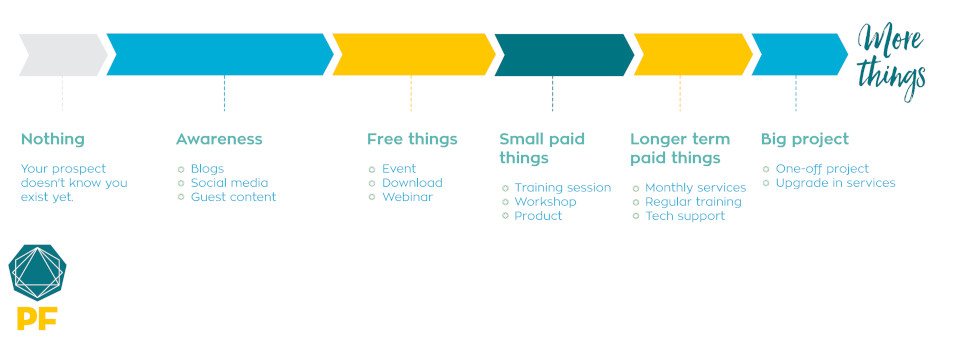
As you continue to create your own unique, client focused content, you begin to notice patterns relating to the content you create. There are key problems faced by your clients over, and over, and over again. And the advice you give them often returns to a few key points around which you base more detailed and specific suggestions.
When this happens, it’s time for you to look at creating your “cornerstone” piece of content.
A cornerstone is literally a stone, set at the corner of a building, without which the building will fall apart. So too your cornerstone piece of content sits at the heart of much of what you share, and without it your content is simply a lot of blog posts or videos or guides.
You will usually find your cornerstone piece of content coming from one of three areas:
- Your values
- Your “way” (methodology , processes unique to you)
- The client journey (the unique path followed by your target audience)
Although you’re welcome to create more than one cornerstone, we would suggest focusing on the primary one first, and getting that right. The cornerstone is the basis of so much further content you don’t want to overwhelm yourself.
Your cornerstone becomes your first impression, your appetizer before the main course, your hook. It’s a useful, helpful piece of content used to draw your prospects in. And it’s always free!
Not sure what type of cornerstone you should create? Look at your target market and your niche and decide on the type of marketing that will appeal to them. Some people respond better to video, others to visual guides and email tips. Examples of cornerstone pieces of content include:
- PDF guide – a 4 – 10 page guide of helpful content that solves a problem for your target market. It allows your prospects to find solutions themselves and shows them how much you know about their pain points. In most cases, these prospects tend to come back for help anyway – they either don’t have the time to follow the process themselves or feel with your extensive knowledge, it would be beneficial to have you on board. Have a look at this guide written by Designer CPA on the top 3 Business Issues facing designers in 2019. It’s beautifully designed, speaks to their niche, and provides useful info to solve their pain points.

- Process diagram – a visual display of the steps that your prospects or clients go through, or the process your prospects need to follow in order to have solutions to their problems. These are generally diagrams, flowcharts or maps. Raedan did this so well with their onboarding diagram. The image is clear, meaningful and visual, and it shows prospects and clients want to expect during their first 6 months of working with Raedan.

- Instructional video – show them how to do something they’re struggling with. Provide helpful, step-by-step processes that they can refer to when needed. Xero or Quickbooks training, creating a budget or forecast, using an app. Be specific, make it relevant to them.
- Infographic – a clear, visual representation of data or information relevant to the pain points your prospects may experience.
- Email tips – a short, focused, emailer providing tips to a specific niche around various pain points. Send it out every week or month and ensure the emailer is aimed at your target market.
How to create the best cornerstone piece
Focus on your prospects’ pain points
If you have a niche, you’ll most likely be familiar with the pain points (specific problems that most people in a niche are dealing with, or will deal with along their journey) that your target market experience.
If you are still deciding on your niche, it may take you a little longer to confirm the pain points you want to focus on, but I would start with the 4 – 6 most common issues that your clients are experiencing.
Although your job is about finding a solution to these specific pain points, it’s not always necessary to show the solutions in your cornerstone. You want to mention just enough to spark their interest.
Make sure it’s on brand
Anyone that looks at your cornerstone piece ought to immediately recognise your brand from the colours, imagery and design style. Your font must also be consistent with your website and any other digital marketing.
Any content needs to be written in the same style and tone of voice that you use in all your other marketing. If you have someone designing this for you, it’s helpful to have prepared Style & Tone of Voice sheets to share with them.
Make it visually appealing
People respond so much more to images than they do to paragraphs of text. In fact, the brain processes images much faster than it does text. So, why make your marketing material hard work for your prospects? Keep it simple!
Look at the colours, shapes, layout, general design, and the balance of white space of your cornerstone piece. Make your images enticing, relevant to the content and on-brand.
Make it easy to find
Depending on what it is, you’ll want to do the following:
- Pin it to your Twitter, Facebook page, and Linkedin account
- Add it as a video on your Vimeo and/or Youtube channel
- Feature it on your website. Display it on your homepage with a link to its own landing page with more details.
- Link to it in your emails and newsletters
- Print it on handouts and pop-up banners for events
- Take sections of your cornerstone piece and create social posts around them
Back it with more detailed content and imagery
No matter how amazing your cornerstone piece is, it’s not enough on its own. It might attract plenty of prospects, but it’s very unlikely to make a sale on its own.
While it draws your prospects in, you need a range of other content which will enable your prospects to build the trust that they need to work with you. For example, if your cornerstone piece is a process diagram, you can do the following:
- Create a landing page on your website with the diagram, and write detailed content on each stage of the process.
- Write a blog on each of the pain points that your diagram covers
- Write a blog on each stage of the process
- Record a video talking about your prospects’ pain points and the process you follow to find solutions
- Create social posts touching on each of the pain points
- Write and design a PDF guide on the pain points and the detailed process
- Send out an emailer with a link to the landing page
- Ask happy clients who have worked with you for a testimonial (this can be written or recorded as a video)
Finally, you are the deciding factor. You have the ability to get those prospects over the line, to really show them who you are as a person, and as a firm.
Your cornerstone piece is just the beginning. It’s like the first chapter of the best self-help book for your prospects.
Talk about it every chance you get
Of course timing is everything, but when the opportunity presents itself, don’t be shy to talk about your cornerstone piece. Bring it up during conversation at events, mention it during prospect calls, discuss it in networking groups, chat about it with your team. It needs to become part of your elevator pitch, a piece of your brand.
The well known ‘Rule of 7’ states that a person needs to hear or see your offer 7 times before they start to take action.
Don’t rush the process
Remember that progression model that we speak so much about?

Just like a personal relationship, you can’t rush the process your prospects need to follow before they invest their money with you. They need time to get to know you and your firm, and build enough trust to decide if they want to work with you.
Your cornerstone is one of the most important free things that you offer your prospects and clients. It shows that you understand their pain points and that you have the right knowledge and experience they need to lead and guide them, and inevitably solve their issues.

